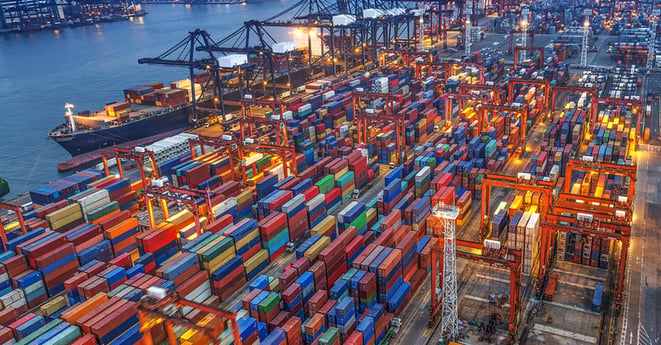Organizational Resilience & Advanced Tech: Save Your Supply Chain
by Kristina Drye, on Dec 21, 2021 5:45:12 AM
It’s no secret that 2021 was plagued with significant supply chain issues. Car lots sat empty, cargo was stalled on the decks of freight ships, and even basic mail took longer than usual. These problems are expected to persist in 2022. COVID-19, while not the sole reason for these issues, only compounded them. The “three C’s” of the supply chain - Crime, Climate, and Convergence- will need to be managed effectively for organizational and supply chain resilience in 2022. The only way to effectively combat these three threats is rapid risk assessments using advanced technology like artificial intelligence (AI) and machine learning (ML).
"The past few years have put a spotlight on global supply chains and reinforced their crucial role in our day-to-day life. Because of this unprecedented moment, the supply chain is about to have a make-or-break year and needs to be right at the top of the C-suite agenda. It's clear that the importance of supply chains will only increase as we head into 2022, and the steps organizations take now will ultimately determine their success or failure,” - Susan Taylor Martin, chief executive at BSI
Supply chains are a core part of an institution’s environmental, social, and governance (ESG) strategy. All supply chains attract illicit activity and organizational risk: factors like cargo crime, labor exploitation, human rights violations, drug smuggling, and other disruptions such as COVID-19 or climate disasters.
2021 made these clear: increased migration in South America due to poor COVID-19 management threatens to increase labor violation risks there. The United States is expected to increase supply chain regulation in 2022, and some countries, like Canada, have instituted vaccine requirements for truckers to cross the border. Of course, companies first have to deal with the widespread shortage of licensed truck drivers, a process requiring due diligence in the form of new employee screening. Cargo thefts are on the rise as ships sit in the harbor. Meanwhile, criminals are adapting to new environments in ways that threaten traditional counter-measures: one example is scammers, who are posing as providers of hard-to-get items right before the holiday season, with the nefarious intent of stealing personal information.
To ensure supply chains are secure, continuous, and resilient, an organization must properly manage supply chain risk, at every level - and that requires advanced technology. AI and ML tools like GOST (Giant Oak Search Technology) screen large populations rapidly and provide accurate risk assessment scores. For example: if your organization needs to vet operators at different levels of the supply chain, or perhaps truckers crossing a border, you need to do it fast and well. Using traditional techniques, this process is time-consuming and often misses valuable information. Tools like GOST - which use AI and ML to assess data found on the internet as well as additional databases - make that job fast, while performing better than traditional methods.
The bottom line is that where there is a vulnerability, it will be exploited. As regulation and ESG practices are more heavily regulated, converging with global trends like climate change and supply chain complications, accurate and rapid risk assessments are going to be what your organization needs to remain resilient. Supply chains will not improve in 2022, at least not in a significant manner. But you can improve your supply chain practice, looking holistically at a large list of converging factors at every level. While this may seem overwhelming, using advanced technology means that it doesn’t have to be.




